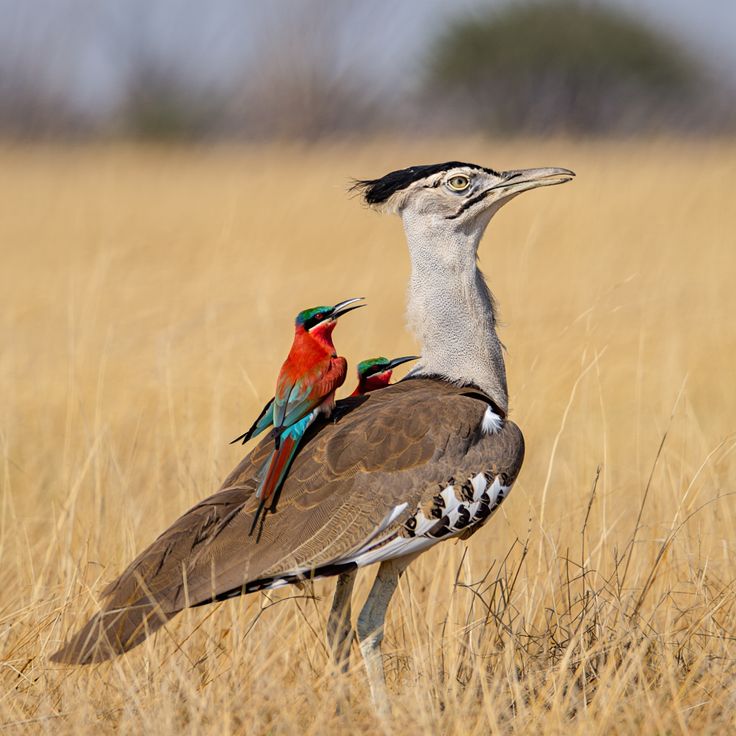The Carmine Bee-eater (Merops nubicoides), with its dazzling rose-pink body and turquoise crown, is already one of the most striking sights in the African savanna. But when it teams up with the massive Arabian Bustard (Ardeotis arabs), the spectacle becomes almost surreal.
Perched high on the bustard’s broad back, the bee-eater waits patiently as its unwitting partner strides through tall grasses. Each heavy step flushes hidden insects into the open — grasshoppers, beetles, and, of course, bees. In a flash of color, the bee-eater launches, snatching prey mid-air with acrobatic precision, then returns to its living perch as if nothing happened.
For the bustard, it’s business as usual — it neither gains nor loses from this odd alliance. But for the bee-eater, it’s a masterclass in energy efficiency: no need to scour the savanna alone when a walking insect-stirrer can carry you across the hunting grounds.
It’s not just opportunism — it’s adaptation in action. In a harsh environment where every calorie counts, this unlikely duo shows that survival can be as much about creativity as strength.
Brilliant. Bold. A partnership painted in pink and gold under the African sun.
